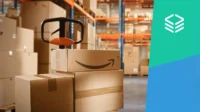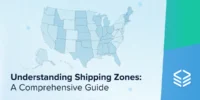As a member of the e-commerce community and a part of the global supply chain, we at Flowspace feel it is our duty to bring you up to date information on the Coronavirus; its effects on impacted communities and what is being done to help those in need. There are many e-commerce brands that are helping however they can to assist with the Coronavirus pandemic.
Key Insights:
- COVID-19 (Coronavirus) has unilaterally altered the way we live our lives.
- E-Commerce brands are doing their best to aid impacted communities like patients, healthcare workers, and those who have lost their livelihood, such as restaurant and hospitality workers.
- Some e-commerce brands are donating products, services, and proceeds to COVID-19 relief organizations.
- Other e-commerce brands, particularly in the alcohol, fashion, and beauty industries have recalibrated their production facilities to produce much needed medical supplies and equipment to be delivered to the frontlines of the epidemic.
- There are ways for your e-commerce brand to contribute to the relief response – reading this list is a good place to fish for inspiration and new ways to help give back during this time of crisis.
Click here for more on “How the Coronavirus is Affecting the Supply Chain Industry” and what you can do to help.
What E-Commerce Brands are Doing to Help
The Coronavirus has set the whole world into a state of flux. No one really knows what will happen next, but there are things that brands are doing to help those in need. Brands are helping by spreading information and keeping people supplied and healthy during these trying times.
Donating Care Packages and Proceeds
Due to the rapid spread of the COVID-19 pandemic, medical professionals and healthcare workers are in desperate need of medical sanitizers, personal protective equipment, and ventilators. In response, countless brands have stepped up to donate the much-needed supplies.
Medical apparel company, Figs, pledged to donate 30,000 scrubs to US hospitals and coordinate donations for meal services, childcare, and care packages for healthcare workers on the front lines of the epidemic.
Serta Simmons Bedding, on the other hand, has committed to donate 10,000 mattresses to New York City hospitals and temporary medical facilities fighting the COVID-19 pandemic, and is calling on its colleagues in the industry to do the same.
Thousands of e-commerce brands have otherwise pledged to donate a percentage of their sales to help healthcare workers in need, like Igloo, Pacific Shaving Co, and Rhone who have pledged a percentage of the profits made in the coming months to various Coronavirus response and relief funds.
Producing and Sourcing Medical Supplies
In addition to donations and care package delivery, many e-commerce brands have recalibrated their production facilities to produce the much-needed supplies, particularly the alcohol and spirits industry.
Anheuser-Busch, Bacardi, Tito’s Vodka, and countless microbreweries and distilleries have not only switched to home delivery service, but converted much of their production capacity to producing medical sanitizers and isopropyl alcohol.
Health & Beauty E-Commerce Brands Step Up
One sector of the e-commerce industry to truly step up during this time of crisis is the fashion and beauty industry. Everyone from L’Oreal and Grande Cosmetics to Gap, H&M and Canada Goose have either committed to donating face masks and protective equipment or have pledged to utilize their production facilities to produce face masks, gowns and patient gowns.
Even luxury fashion powerhouse LVMH, which includes brands like Louis Vuitton, Bulgari, TAG Heuer, Tiffany, Dom Pérignon, has committed to repurpose production lines used to make perfume and cosmetic brands to produce large quantities of hydroalcoholic gels, like hand sanitizer.
Prioritizing Personal Care Products and Shelf-Stable Foods
E-Commerce brands in the food sector are also contributing to the relief effort by redirecting budgets in response to the crisis. Master Kong – a producer of instant noodles – has shifted its supply chain away from traditional offline retail channels to e-commerce in response to the crisis.
Other brands have switched their focus to personal care products and online grocery to better enable the stay-at-home economy, like the retail-giant Amazon and grocery delivery company Instacart Inc.
Click here for more on Amazon’s decision to prioritize essential products and How To Switch Your Amazon Retail Business From FBA To FBM.
Offers, Promotions, and Discounts
One of the biggest contributions to the COVID-19 relief effort by e-commerce brands has been the abundance of offers, promotions, and discounts offered to encourage consumers to stay at home, wash their hands, and practice social distancing until the pandemic is over.
In fact, Shopify now encourages e-commerce brands to offer discounted or entirely free shipping to encourage quarantined consumers to shop their brands and buy online, rather than seek out a brick-and-mortar location.
Other companies on the fringes of the e-commerce industry are making it possible for small e-commerce businesses to keep their livelihoods, like Kabbage Payments and Give Local, who make it possible for consumers to purchase gift cards to contribute to local businesses and retail locations
How is Flowspace Helping to Fight the Coronavirus?
As an on-demand warehousing and third-party logistics service provider, Flowspace is uniquely suited to not only help our clients through this trying time but also help them better contribute to the greater COVID-19 relief effort.
With 1000+ warehouses spread across the country and fulfillment centers in every major city in the U.S., Flowspace is the service you need to distribute your brand’s donations, care packages, supplies and essential products to where they need to go.
If you’re one of the thousands of e-commerce brands struggling to keep your store open during the Coronavirus epidemic, then contact us at Flowspace. With no long-term commitments and low minimum storage requirements, you can easily scale back your inventory to save cost, or ramp up production to meet the ever-growing list of demands caused by the crisis.
Additional COVID-19 Resources
For the most up to date information and guidance on the COVID-19 outbreak, visit the WHO website. For up to date statistics and data, visit the Our World in Data website.
For more on what you can do to fight the COVID-19 outbreak, visit Coronavirus Aid: Organizations Helping In COVID-19 Relief Effort.





